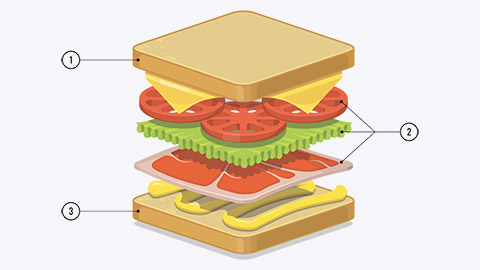
A design process is a step-by-step approach used by designers to ensure that they produce the most effective design. It involves brainstorming ideas, research, analysis, problem-solving, developing ideas, evaluation and discussion, refinement and re-evaluation, production, proofing and finally presentation.
It is important to keep a record of the design process by writing down every single project requirement, idea and goal--including the smallest ones.
Starting a new project, a productive first step is to try your best to come up with a detailed plan of your actions. Design projects demand maximum concentration so you must structure your plan to detail every phase and step taken to achieve the final product.
During every phase you need to manage various, sometimes opposing, requests and there may be times where you need to perform quickly whilst paying attention to every detail and the overall big picture of the project.
If you neglect some important project requirements because you forgot about them or have lacked a structure from the beginning, you will come up short and your final product may not be effective in representing the ideas you had in place from the beginning.
An example of a record-keeping tool is a visual diary. In your visual diary (hard copy or online) you can record all the steps within the design process from the initial design brief, idea generation, concept, sketching, planning, analysis, feedback and final product.
Let’s visit the steps to see what the design process looks like.
- Interpreting the brief
- Idea generation
- Planning (timeline/list)
- Research and analysis
- Concepts sketches (thumbnails)
- Development of concepts
- Critique and evaluation of concepts
- Refinement and re-evaluation
- Production and proofing
- Presentation.
Why is a 'critique and evaluation' so important?
The purpose of a critique and evaluation is to ultimately make your design piece better for your targeted audience. By being able to have someone observe, review and provide constructive feedback you will strengthen your communication with peers, clients and supervisors; as well as further develop your skills as a creative designer.
It is important to accept and deliver constructive feedback as this will support you in recognising strengths, areas of improvement and further development. Feedback can be delivered through peer evaluations or self-reflections (reviewing your work).
You should explain your ideas and understanding through specific and descriptive feedback. When following these guidelines, you can provide clear and concise information instead of just saying 'I like it'. It also helps to refer to examples that you might have seen to help explain what you mean--this can also be used to give feedback on how the work could be further improved.
An evaluation can be delivered through verbal or written methods that involve providing both positive and negative feedback, ensuring you remain constructive and not personal (which at times can be tricky to receive and navigate through).
A strategy that can be used to support you is called the 'sandwich method'. The sandwich method is a technique that can be used to keep your feedback constructive, guided and structured. It allows you to focus on the positive feedback that you would like to share as well as identifying the areas of improvement. This method is important as it highlights the feedback positively and avoids becoming negative and critical.

- Bread: this is where you are able to start with positive feedback discussing what you loved most about their design. Try and include examples to support your evaluation.
- Filling: this is where you provide information regarding areas of improvement and what you suggest they adapt or modify. To make this effective, you should also provide examples as to how they can improve.
- Bread: provide overall encouragement and praise. Offer support for areas of improvement and leave on a positive note.
Reflect on a time where you had to give or receive feedback: would you have amended or adapted anything to make evaluation a more positive experience?

